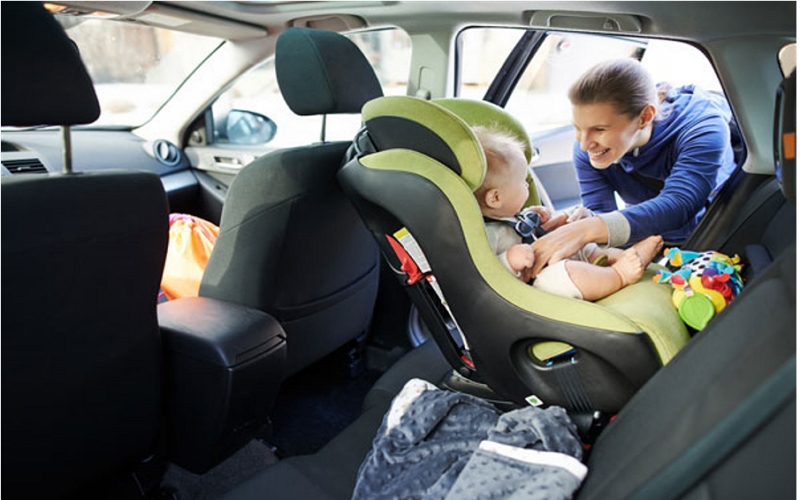When can baby face forward car seat? One of the big decisions many parents have to make when purchasing a car seat is whether or not they can turn their child around.
There are lots of forward-facing only seats out there, so if you want your little one facing backwards it’s important to know at what age and weight this can be done safely. Most experts recommend that children face forwards until they reach the maximum height and weight limit for their particular model.

Depending on where in Europe you live, these limits might vary slightly from country to country – but across much of the continent, most manufacturers agree that once kids are over four years old (and sometimes up to six) then it’s safe enough for them to move onto rearward facing seats with high back supports.
However, it’s important to note that this is a general rule of thumb only and the exact age will vary from child to child. If your baby was born prematurely then you might have asked yourself whether or not they can turn around earlier than other children, as premature babies do tend to be smaller in size – but even for these little ones, it’s safest if you follow the manufacturer guidelines first.
Of course, some other factors may influence when your baby should face forward too: if their legs dangle down uncomfortably because they haven’t reached maximum height yet, for example. Or perhaps they’re starting to develop neck muscles so keeping them upright isn’t as uncomfortable anymore? In such cases turning them around early could help with comfort.
It’s also worth bearing in mind that every child is different – some are happy to face forwards from a young age but others need more time both physically and psychologically before they feel ready for forward-facing car seats.
So if you’re worried about turning your little one around, it might be best to consult with your doctor first who can give you their professional opinion on the matter.
What car seat should an 8-year-old be in?
A child should be in a forward-facing car seat with harness restraints until they outgrow the height or weight restrictions of their current seat. At this point, your child is ready for a booster seat.
The AAP recommends children stay in boosters seats up to age 12 years old and more than 80 pounds. If you have additional questions on how long you need to keep them rear-facing or what type of car seat they’re using, talk to your paediatrician about these concerns today!
What kind of car seat should a 40 lb child be in?
A child who weighs 40 lb should be in a harnessed car seat with the top slots at or above their shoulders. The most common mistake parents make is to keep their children rear-facing too long, which can lead to spinal and head injuries when an adult suddenly stops while driving.
The full five-point harness system will provide added safety benefits for your growing toddler by distributing crash forces over the entire body rather than acting like a twisted belt (like what happens when you wear a regular seatbelt).
It’s also important that all of your child’s car seats match each other so they won’t get mixed up during emergencies.
Does a 7-year-old need a booster seat?
According to the National Highway Transportation Safety Administration, all children under age 13 should ride in booster seats or other appropriate child restraints.
Parents are advised to check their states’ laws for specific requirements regarding when a child can move from one type of safety seat to another. Generally speaking, somewhere between ages four and seven is usually when kids transition out of car seats into regular belts (lap belts only).
Many experts recommend that parents keep their kids in high back boosters until they’re tall enough for adult belts – at around age 12-years old; but many others feel safer with them staying buckled up in harnessed car seats well beyond this timeframe.
If you’re looking for more information on which method is best suited according to your state’s car seat laws, check out the NHTSA’s guide to booster seats.
At what age can a child use a backless booster?
A backless booster car seat is typically the next step in child safety once a high-back harnessed car seat has been outgrown. However, there are some guidelines to follow when it comes to which age can use this type of restraint.
For example, most children should remain rear-facing until they weigh 20 pounds or reach their first birthday, whichever occurs last.
All children under 13 years old should be kept as far away from airbags as possible and that includes using boosters with built-in shields if available because these items increase the risk of injuries during an accident.
But only for small occupants under 13 years old who lack adequate bone development (usually measured by height) for a shield to work properly without putting them at risk due to its use.
If a child is too small to use the car’s seat belts, then they are also too small for booster seats that require them unless there are no other options available.
